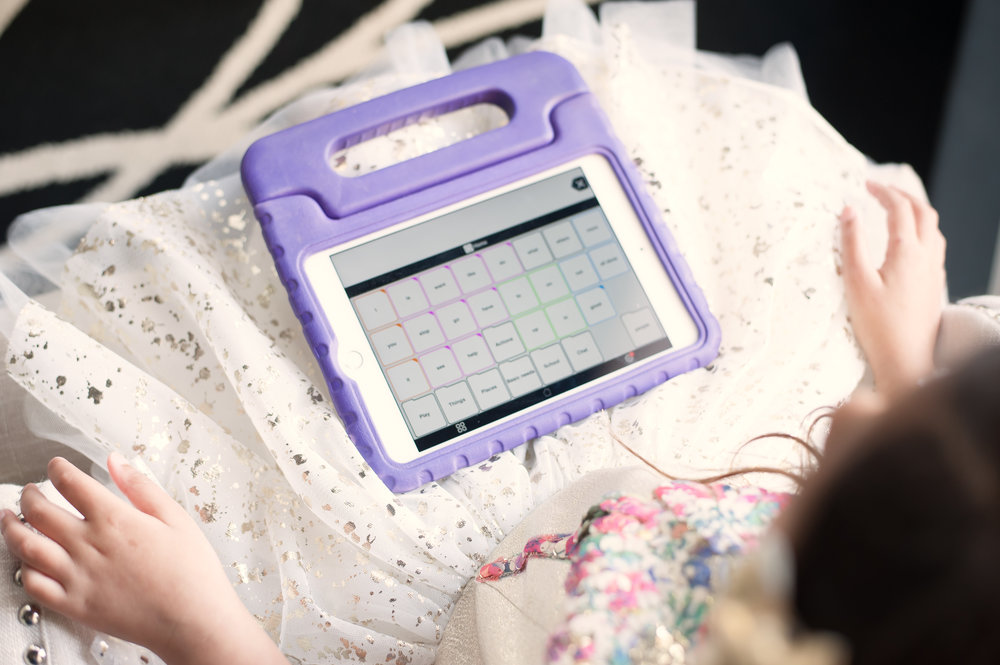Non-verbal individuals live without something we tend to take for granted—the ability to communicate, be heard, and express their feelings and their dreams. My daughter Sabita, who is on the autism spectrum, is one of these people. Sabita’s inability to speak doesn’t mean that she has nothing to say. This is why, when she was growing up and I noticed that her speech delay didn’t improve, I knew I had to find a solution to her problems. It came in the form of technology. An Augmentative and Alternative Communication (AAC) app. These apps are a great solution to the issues that non-verbal individuals face. For my daughter, it has been a life saver.
When my daughter was born, she was a true miracle. My husband and I had tried to get pregnant for a long time, and had to take treatment to be able to conceive her. When she was born, we knew she would be the most loved little girl in the world because we had wanted her so badly. So when we started noticing that she was developing differently from the other children, and we had her evaluated for autism around the time she was two, her diagnosis came as a shock, but we knew we would do everything in our power so that she could blossom into the incredible girl she was meant to become.
Put yourself in her shoes…
Imagine being unable to express yourself. We were all born that way. And that is one of the reasons why, as babies, we threw tantrums, out of frustration because mommy didn’t know if we were hungry, if we needed a diaper change, or if we just needed to take a nap. Most of us grow out of this phase by discovering the wonderful tool of language.
An individual who is non-verbal on the other hand, has a physical inability to speak words as other children learn to do. So, if no solutions are found for them, they will continue to harbor frustrations at their inability to express their needs to those around them. They may continue throwing tantrums, as a pre-verbal infant would. Wouldn’t you do the same thing if you were physically unable to speak?
Isn’t technology wonderful?
When I found out about AAC apps, I knew I had to give it a try, to give my beautiful little girl a chance to express all the feelings that were locked up inside her. We found an app for iOS named Proloquo2Go, which is symbol-based. Sabita could now tap a symbol on her iPad, and it would say words for her. I still remember the look of awe she had when she was holding her tablet, and using her newfound power. She looked like she was on top of the world.
And so was I! I truly felt that I’d given my daughter a gift that she had been deprived of. With her iPad, she could speak using full sentences, as well as type words. She could express not only her needs, but also her love for us. She could suggest we play a game. She was able to communicate with her classmates. She had finally found her voice!
Why access to AAC apps needs to be more widespread
With my daughter being able to finally express herself, I could have left it at that. But I constantly remind myself of the privilege that I have to be able to afford these things that can help my daughter grow. Unfortunately, for families of limited means, these apps and the training to use them can be costly. In some cases, they can be covered by insurance, and made available through non-profits or governmental resources.
But insurance companies, for the most part, have been slow to acknowledge the need for these apps to help non-verbal individuals live a normal life. And too many parents of special needs children are unaware of resources like AAC apps to help their children. This is why I have started a non-profit organization to give non-verbal individuals access to AAC apps, and this is also why I have written a children’s book to help raise awareness of the very existence of those apps. I hope that these initiatives will help children like Sabita to have access to something most of us take for granted—the beautiful gift of speech.


